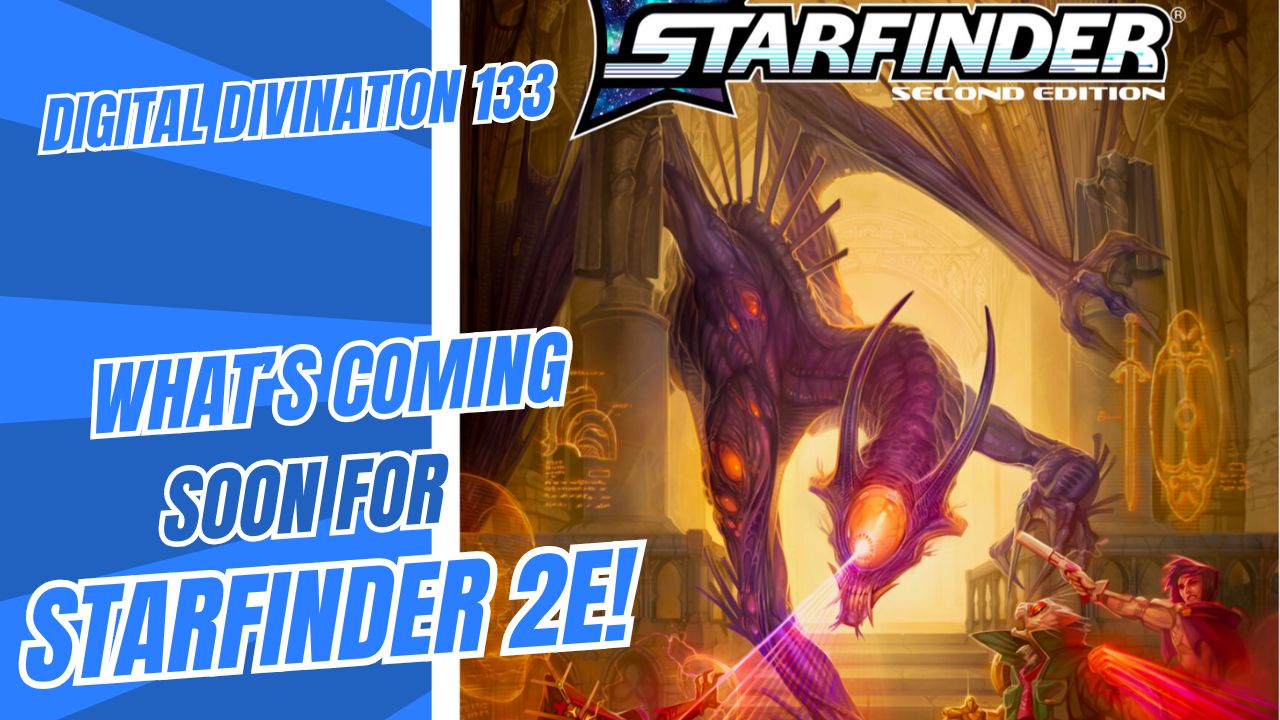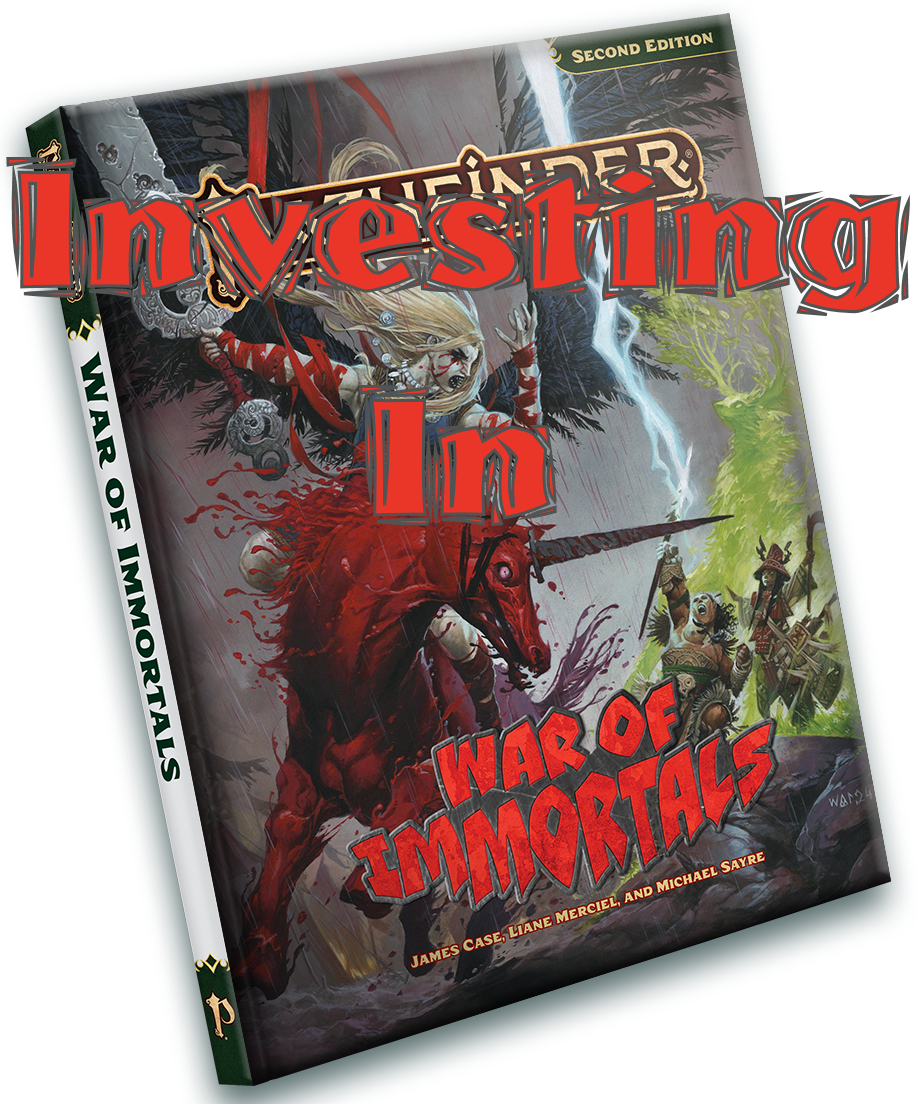Dragons. They are stronger than us. They are more agile. More virile. They are smarter and wiser . And as frightening as they are, they have the same haunting beauty as a thunderstorm, even as it rips your village apart. Furthermore, they can fly, many can burrow or swim. They cast spells, are ferocious warriors, and have one of the most feared and effective offensives in the game: breath weapons. No creature in Dungeons and Dragons elicits such fear and awe as the mighty wyrms that lend their names to this great game we play.
I have to expand upon something I said in my review of the Monster Manual. I listed Dragons as a low point of that sourcebook. In no way do I feel Dragons are anything but the pinnacle of D&D creatures. My point was simply that Dragon encounters tend to differ in minimal ways. If the Draconomicon does its job, that should no longer be the case.
At a Glance
There may never be a D&D manual with a cover as stunning as the Draconomicon. An old red dragon casually tending to her young, showing a softer side of the “archetypical evil dragon”. Inside, it just gets better. The heads of the ten true dragons decorate the inside cover. Sketches of dragon bone and muscle structure bring life to these mythic creatures, as do the illustrations of each dragon’s identifiers, often including adorable hatchlings. No more than a couple of pages go by before another piece of original artwork, most of which are full colour. And they’re all pertinent to the contents of the page.
My favourite illustrations are the armoured dragon on page 23, because it represents a dragon in a way they aren’t normally thought of, and the Pyroclastic dragon on page 183, a fantastic piece of art that I would love to have on my wall.
Highlights
Accessible
A fan of fantasy with no prior knowledge of D&D as a game can pick up the Draconomicon and be entranced. There is so much brilliantly conceived and beautifully written prose that adds context to the game’s true dragons, their abilities and habits, it’s easy to become so lost in the writing that you won’t even notice the first 56 pages have no rules content. In a game with players that divide its content into the all important “crunch” (the rules of the game) and decorative but ultimately unimportant “fluff” (the flavour text and back story), the Draconomicon’s greatest strength is Chapter 1: All About Dragons.
It is fascinating to read about why a dragon keeps its horde, what it’s like to live for millennia, and the important differences in personality between each species of dragon.
In Depth
A dragon encounter tests the mettle of a DM. Other than the dimwitted white, dragons have high intelligence and wisdom, which instantly means the DM must play them carefully. And dragons offer a wide range of options in combat, even wyrmlings. A DM must take care when running a dragon encounter to do these icons justice. Thankfully, the Draconomicon offers extensive tips. Diagrams of dragon’s reach with each weapon for the different size categories, illustrations of how dragons maneuver in the air, and clarifications of just when a dragon can reuse a breath weapon.
Adds Versatility
Exactly what I wanted out of this book. Feats and spells that change the tactics of dragon encounters. Metabreath feats are marvelous, giving a dragon the option of adding more punch to their breath weapon at the cost of waiting longer to use it again. And I can’t say enough about how cool the Animate Breath spell is.
The new monsters introduces a slew of new creatures of the dragon type that a DM can use to further vary dragon encounters. Thanks to the Draconic Creature template and the Dragonkin monster, a wide enough variety of monsters of the dragon type now exist to have an all dragon adventure without getting repetitive.
On the player’s side of the action, there are plenty of new options to increase a PCs ability to kill dragons -like the Dragonfoe feat, the spell Suppress Breath Weapon, and the Dragonslayer prestige class- to mimic their abilities –like the Dragon Wild Shape feat, the spell Dragonscale, or the Dracolyte prestige class- or to gain them as valuable allies, like Dragon Cohort, Dragon Companion, and Dragon Steed feats, the spell Dragon Ally, and the Dragon Rider prestige class.
Low Points
Dragon Prestige Classes
The concept is dodgy but could be done well. Dragons of such importance they gain abilities few other dragons possess. And yet they’re so dull. You can tell a lot about a prestige class by it’s picture, and when the majority of them are illustrations of dragons sitting still, looking regal, it shows that there wasn’t enough thought given. The only prestige class of interest in this section is the Bloodscaled Fury, essentially a wild barbarian dragon. And even it doesn’t capture my interest.
Sample Dragons
It would be unfair to call this section filler, especially since it offers the background and character that I asked for in the Sample NPC section of my Dungeon Master’s Guide review. But who needs 76 pages of sample dragons? And in the off chance a DM has a player who read the Draconomicon cover to cover, the entire section is worthless.
Stifled Creativity
The Red Dragon entry in Chapter 1: All About Dragons states that “most red wyrmlings are left to fend for themselves”. And yet the cover clearly shows three dragon children of various ages being looked over by their mother. Why do I bring up this minor gripe? Because there is a downside to having this much information on a single subject available. Creative freedoms are limited every time concrete information is given. If a DM is running an encounter where a white dragon eats a PC alive, and a player at the table points out that “a white dragon will consume only food that has been frozen”, the session grinds to a halt. That player can rightly argue that his character was employing that knowledge about white dragons and acting accordingly. And the DM can rightly retort that maybe this white dragon is different, and DM is god.
Juicy Bits
The most important new option in the Draconomicon is Dragoncraft Items. For years after every dragon encounter, PCs would skin the beast and bring its scales, fangs, blood, eyes, everything to a blacksmith. And every time they would be baffled by just how little could be done with these materials. The worst of all was dragonshide armour. My players expected damage reduction or energy resistance at least. No. The only real feature of dragonhide armour over regular armour was that druids could wear it. Thankfully, the Draconomicon introduced the Dragoncraft feat, which grants characters special understanding of retaining the magical properties of the donor dragon whose body parts are being made into weapons, elixirs, or, yes, armour.
Personal Experience
I used a cabal of blue Dracolytes as NPCs once. They didn’t enter combat, so I couldn’t tell you how well the class works. Otherwise I’ve used very little of this book. However, I have read it recreationally repeatedly.
Overall
I think this book is fantastic in ways most sourcebooks shouldn’t be. The Draconomicon is a pedestal upon which dragons may rest, written with great care. I don’t care that I may never use a feat from this book, or a prestige class, I just enjoyed reading about the various options available. I would recommend this book to anyone that appreciates good fluff, because there is book with the Dungeons and Dragons logo on it that is more stunningly illustrator or immaculately written than the Draconomicon.
If You Liked This Book…
The Libris Mortis and Fiendish Codex I and II are written in the same style, but don’t have as much presence.




Leave a Reply